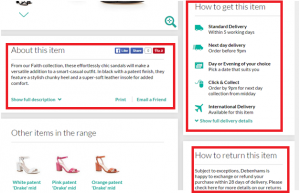All organizations will undoubtedly experience a period of change at some point in time. Significant changes at work can have a huge impact on employee morale, motivation, well-being, and performance. Some employees might be more open to change, while others might resist it. As an HR professional, managing changes in the workplace is no easy feat and it’s important to encourage resiliency during times of change.
Changes in the workplace are inevitable
The old proverb says, “Change is the only constant”.
If we are to understand and deal with change positively, we must first remind others to accept its inevitability. If we make a choice to take a different approach and neither avoid nor resist change, but instead accept and embrace it we can use it to our benefit. When your organization goes through a major change, use it as an opportunity to unite your workforce and be a pillar of support for your employees. Below, we dive into four tips for managing changes in the workplace.
1. Understand mindsets and emotions
When people experience major changes in the workplace, they go through a mixture of emotional reactions. These emotions are perfectly normal but it’s important not to let them get the better of others.
Your workforce may not go through all the stages; they may not go through them in order, and they may find themselves spending different amounts of time at each stage but recognizing and understanding where your employees’ mindsets and emotions are at is a huge step towards moving forward. The sooner you can get your employees on the ‘acceptance’ stages, the less stressful it will be for them and their peers.
What can you do to ease your employees when there are sudden changes in the workplace? Below are five steps:
- Look at Fisher’s transition curve diagram
- Identify what stage of the transition curve your employees are at and what emotions they are feeling.
- Think about what they can do for themselves, or what support they may need from you, in order to accept change and move forward.
- Encourage employees to share their feedback with their managers to ensure they get the support they need.
- Hold managers accountable to take action on employee feedback.
2. Inform your workforce
One of the biggest causes of stress during periods of change for employees is lack of knowledge and understanding about the changes – how they will work, who they will affect, why they are taking place, and so on. Be proactive and provide your workforce the information they need.
Talk to your HR department, leadership team, managers, and peers to ensure everyone is aligned and has a clear understanding of what is happening and why. Be aware that information might get distorted, and rumors abound during times of great change, so act quick to course correct any incorrect information being passed around your organization. Talk to leaders and provide them with the right messaging so they can properly and accurately communicate to their teams.
If employees have specific questions about the changes being put in place, ask them to provide their feedback and follow up on it immediately. The last thing an employee wants is no follow-up after providing feedback. Make sure your employees feel heard and make it your priority to listen and take action on feedback.

3. Set expectations
During periods of change, we tend to focus on all the things we can’t change, making us feel out of control and anxious. Instead, we need to focus on the things we can actually do something about, which makes us feel more empowered and in control.
A big part of taking control of the change your workforce is experiencing is to set expectations. It’s important to always maintain an optimistic outlook; however, aim for what is realistically attainable.
You and your workforce shouldn’t expect all of the changes ahead to be easy. In fact, you should expect some dead ends and misunderstandings along the way, despite your best efforts to avoid them. You might not be able to anticipate all of the problems ahead, but you can map out in general terms how your organization will deal with them and prepare in advance.
4. Look after your employees
During times of anxiety and stress, it’s easy for people to stop looking after themselves. It’s during these difficult times when looking after each other becomes even more important. Look after your employees and make sure they feel heard, attended to, and supported. When there are changes in the workplace, give your employees the resources and attention they need to succeed.
Invest time and energy into your workforce. Take the time to give them the tools they need to confidently meet the challenges ahead and recognize, develop, and practice their own personal coping strategies. These can help your workforce build and maintain their resilience towards changes in the workplace.
In order for your workforce to be mentally strong and emotionally resilient, you need to prioritize wellness. Motivate employees to be physically healthy, eat healthy, drink plenty of water, and get regular exercise. Offer free online meditation workshops or simple relaxation techniques to help ease their stress.

As your organization faces changes in the workplace, take our top tips with you. And don’t neglect the one constant that employees will always value during periods of change: appreciation. Appreciate your employees and frequently recognize them for their dedication, hard work, and contributions. Your employees are the ones that will help your organization move forward and navigate changes successfully. So, thank them for their patience and commitment during times of change.
Start showing appreciation for a colleague today. Customize and send an Employee Appreciation Card here.
Business & Finance Articles on Business 2 Community
(23)








